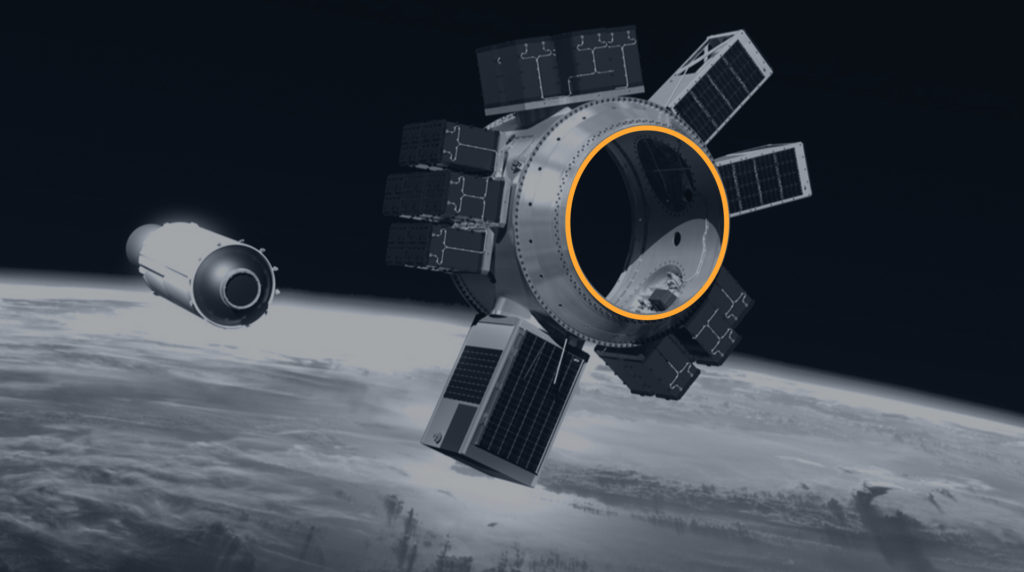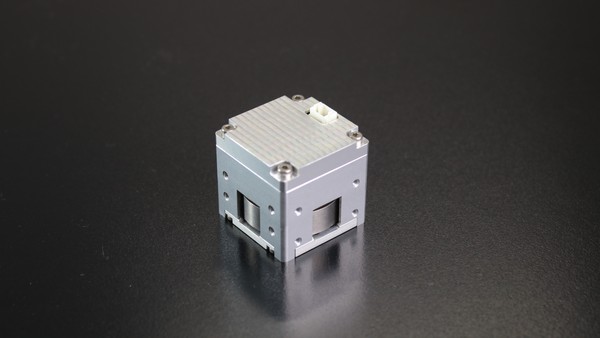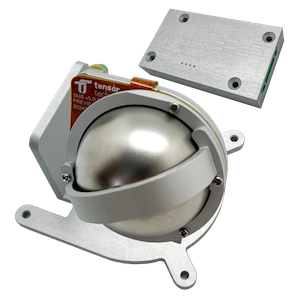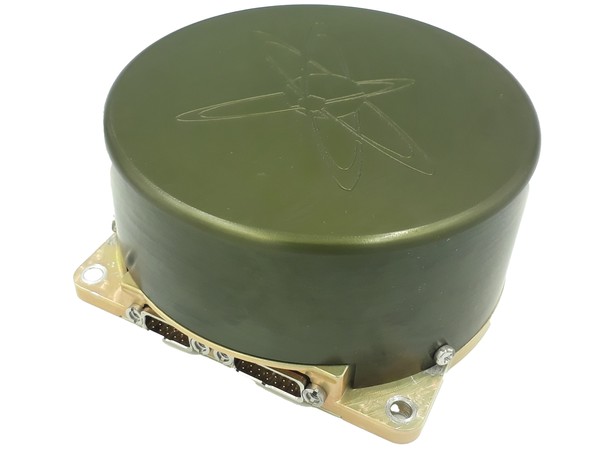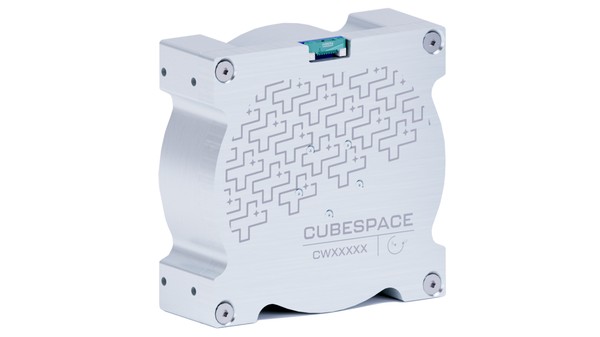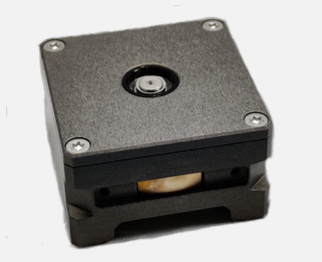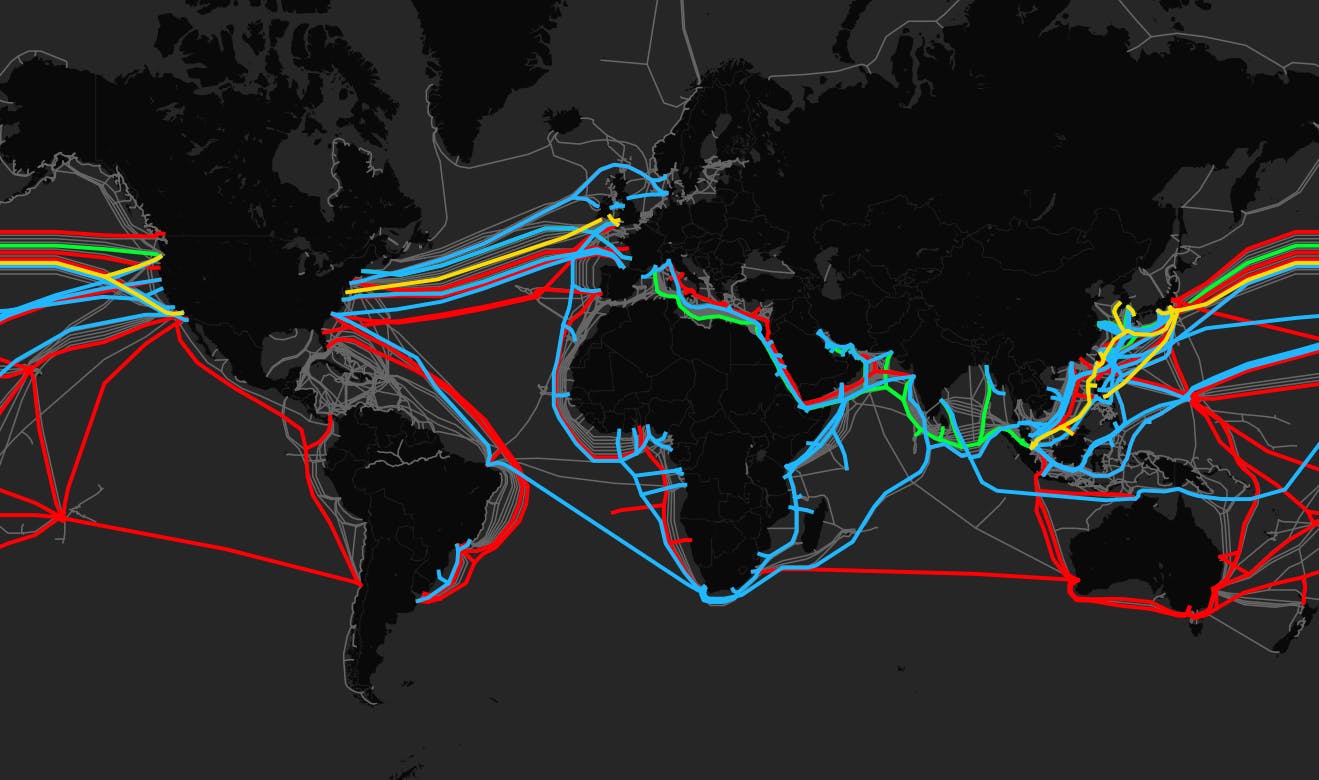With platform agility playing such an important role in modern space missions, the question of whether to use reaction wheels (RWs) or control moment gyroscopes (CMGs) is a trade-off we’ve seen numerous engineers undertake on satsearch.
After chatting with a number of engineers, we realized that there’s need for more in-depth understanding of the ins and outs of both types of attitude actuation solutions.
In this article we take a close look at the factors to consider when assessing these options, based on our observations and data from our platform on missions currently being built, additional research, and the unique insights of some of the Trusted Suppliers that we work with at satsearch.
Firstly, let’s review why more and more engineers are facing this particular decision when designing new missions and satellites.
Introduction
Everyone would like precise, powerful, and efficient attitude control that makes satellites more versatile and valuable. And this can often come down to selecting between reaction wheels or control moment gyroscopes.
Of course, there are trade-offs in every actuator’s selection that need to be considered. In addition, the supply chain is constantly evolving, with new technologies gaining flight heritage for the first time and older models being obsoleted by manufacturers on a regular basis.
In particular, we chose to take a closer look at this topic because of a clear trend we’re observing in the industry towards larger satellites. There are several high power communications, hyperspectral imaging, and SAR constellations, for example, currently in development using spacecraft in the microsatellite category.
In fact, when you factor in launch costs (per kilo) and availability, along with price-per-performance for the key value-generation metrics, we’re seeing systems with around 500 kg mass emerge as something of a sweet spot in modern missions, for a number of applications.
In such systems there is obviously more power and volume that can be utilized than CubeSats and so technologies such as control moment gyros are more viable options, and can be more directly compared to high-power reaction wheel setups. The overlap between the two has also grown significantly with new innovation coming online.
Therefore, we have put together this article to help mission designers better understand the factors that should be considered when choosing between a CMG or a reaction wheel.
At satsearch we have a wealth of data on what engineers are planning and building across the global supply chain. We have supported more than 400 missions and we’ve seen how trade studies are becoming more complex and nuanced, with final technology choices more often being multi-objective or even subjective.
For these reasons, in this article we have attempted to present both a high level overview of the key factors that should be compared in the RW vs. CMG decision, along with more nuanced and contextual information provided by representatives of several experienced suppliers.
The strength and depth of our relationships with providers in the industry has enabled us to collect and collate this information for your use, and we have included the full contributions from each expert below.
Although we believe that the trade study assessment presented in this article serves as a great starting point for engineers, we understand that the devil is in the details and that there could be areas for improvement. If you have any thoughts on how we can enhance this resource and turn it into a definitive reference for space engineers, please write to us at [email protected].
Trade analysis summary
At satsearch we have helped hundreds of space engineers around the world navigate trade studies and better understand the modern supply chain.
Mission teams come to us with certain requirements and objectives, and then we help to refine their needs, identify suitable solutions, and get in contact with potential suppliers. We’ve done this multiple times across virtually every category of space product and service, and we’ve observed many trends in this huge volume of data.
One such trend is the importance of early supply chain assessments to support the ‘make or buy’ decision. Today there are more options on the supply chain than ever, but there are also many compelling reasons why a team may elect to bring development of a certain capability in-house – such as the need to create or protect aspects of intellectual property (IP), unique use cases, export restrictions, or, simply, cost.
But for those looking externally at attitude actuators, there are many proven options on the market, particularly for reaction wheels that have longer heritage for small spacecraft. So the choice comes down to fundamental performance requirements and engineering limitations.
As explained in the introduction, our aim with this article is to help make this decision faster and easier through sharing objective data on the technologies and contextual insights from suppliers.
To begin with, we have put together a high-level overview of how each option stacks up for a range of critical performance and operational criteria in the table below. Note that the factors used are usually mission- and application-dependent, but the judgements given reflect how each attitude actuator type would perform in a typical use case with standard operating conditions.
There are many theoretical comparisons of RW and CMG performance available online, but we have taken this a little further to combine these with systems engineering knowledge to present a simple table of both basic metrics and mission-/application-dependent information.
This is designed to work as a quick-start guide for first-order assessments – it isn’t comprehensive and we have made subjective choices across many criteria, while also presenting the comparisons, in some cases, without the full nuance and context needed to perform a rigorous trade study.
For a fuller understanding of how to weigh up these factors, the supplier contributions included below will also be very useful. And if you have any questions or comments, or perhaps even disagreements with some aspects of this information, please feel free to contact us any time at [email protected].
| Mission agility (e.g. for pointing or maneuvers) | Lower | Higher |
| Output torque (per unit mass, power, or volume) | Lower | Higher |
| Output torque accuracy | Higher | Lower |
| Achievable slew rates (per unit mass, power, or volume) | Lower | Higher |
| Power requirements (for a given value of torque)1 | Higher | Lower |
| Volume requirements (per unit torque output) | Lower | Higher |
| Price per performance (per unit torque output) | Lower | Higher |
| Torque generation | Direct (via brushless motor to spinning flywheel) | Indirect (using gimbal-mounted flywheel to amplify torque of spinning momentum wheel) |
| Control complexity | Lower | Higher |
| Number of constituent parts | Fewer | More |
| Engineering complexity | Lower | Higher2 |
| Microvibrations (per unit torque) | Higher3 | Lower |
| Satellite stability (i.e. low vibration and jitter for controlled attitude holding and slewing) | Higher | Lower |
| Speed operating range | Smaller | Larger |
| Thermal constraints | Higher in larger RWs | Lower |
| Reliability | Higher | Lower4 |
| Operating lifetime | Higher | Lower |
| Heritage | Higher | Lower |
| ITAR restricted | No | Yes |
| Satellite size most suitable for | Smaller satellites | Larger satellites5 |
| Suitability for communications missions6 | Higher | Lower |
| Suitability for typical Earth Observation missions6 | Higher | Lower |
| Suitability for military and surveillance applications7 | Lower | Higher |
1. There are, of course, several ways in which to compare the power requirements of each system. For any actuator there is an operating power profile with nominal and optimal values across a distribution. In this instance we have selected the power required to reach a certain level of torque on a satellite (all other factors being equal) as a starting point for trade analysis.
2. Some suppliers offer integrated CMG options that can simplify implementation and engineering.
3. There is usually a small difference in microvibration levels, per unit torque, that can be achieved with each actuator type. Reaction wheel eigen frequencies can get excited at different operating speeds whereas a CMG operates at a constant speed and therefore avoids exciting its eigen frequencies, resulting in fewer microvibrations.
4. To address operational reliability concerns CMGs can be implemented in fault tolerant pyramid configurations that provide redundant multi-axis control in the event of multiple actuator failures. Such setups will come with additional trade-offs, such as greater complexity, power requirements, and cost.
5. Some suppliers claim that CMGs can match, or even outperform, reaction wheels (in terms of the torque/power ratio) on CubeSats, under certain operating conditions.
6. Typical mission profiles for such applications include Earth pointing satellites that require little agility for standard operations.
7. Typical mission profiles for such applications involve Earth pointing at multiple off-track targets and/or rapid responses to commands.
Supply chain insights
To build the trade-off table, we interviewed a number of experts in our supplier network to get their thoughts on selecting between RWs and CMGs.
This section contains the full contributions from the following experienced engineers and suppliers, provided in an individual capacity. Click on any of the names to head straight to that person’s insights:
- Chris Jones, Business Development Manager at ASPINA
- Julien Hennequin, Head of Sales at Tensor Tech
- Jens Nielsen, Head of GNC at Space Inventor
- Rodrigo Ferreira, Lead Space System Engineer at Bradford Space
- Marcello Bartolini, Co-Founder & Head of Engineering at Dragonfly Aerospace
- James Barrington-Brown, Founder and Global Chairman of NewSpace Systems
- Mike-Alec Kearney, CEO of CubeSpace
- Julien Tallineau, Founder and CEO of VEOWARE
- Tushar Goyal, Head of Business Development, Space Products, at AAC Clyde Space
- Tjorven Delabie, CEO of arcsec
ASPINA is a Japanese group of companies with presence in both Europe and the US, bringing deep expertise in scale manufacturing of precision motors and drive systems for many non-space applications to the space sector.
We asked them for their perspectives on the trade-off between reaction wheels and control moment gyroscopes and received the following insights from Chris:
Chris Jones, Business Development Manager at ASPINA
CMGs are great for customers that require extreme agility for low power, but the added complexity of CMGs often comes with much higher cost and/or reduced reliability.
On the other hand, typical reaction wheels are lower cost, simpler to control, and higher reliability, but may lack the required torque for some spacecraft.
At ASPINA we are developing a line of high-torque reaction wheels that can help bridge this gap by offering high-agility spacecraft manufacturers a low-cost and reliable option.
In addition, from the supply-side, one of the biggest barriers for the CMG market is the fact that it is listed on the US Munitions List meaning it is an ITAR controlled item. This might imply an added cost to doing business and increased lead times to ensure compliance with regulatory requirements and a smaller addressable market.
Highlighted product:
The ASPINA ARW-3m is reaction wheel specifically designed for CubeSats roughly in the size range of 3U-6U for mass production. The system is made in Japan and has a short lead time (as little as 3 months).
Tensor Tech came to the market with out-of-the-box thinking, introducing their unique ‘spherical motor’ technology for spacecraft actuation.
Today they offer CMGs for small satellites and we chatted with Julien, to get a sense of how they see customers trading off actuator options for attitude control, who said:
Julien Hennequin, Head of Sales at Tensor Tech
At Tensor Tech we believe that CMGs offer their full potential on larger smallsats but can also match, or outperform, reaction wheels in terms of the torque/power ratio even on CubeSats, under certain conditions.
Depending on the application and mission objectives, maximizing system performance can be achieved by using CMGs to reduce power consumption for a given torque, or provide more torque (agility) for the same power budget than a reaction wheel setup.
Although reaction wheels do have simpler control laws, integrated CMG solutions can also result in improved accessibility and reduce implementation time, making them a viable option for many users.
At Tensor Tech our unique Spherical Motor technology is also built to offer greater reliability through multi-axis control and fault tolerance. For instance a pyramid configuration would allow for the failure of two systems and still provide 3-axis control.
Highlighted product:
The Tensor Tech CMG-10m is a variable-speed, single-gimbal Control Moment Gyroscope (CMG) suitable for 3U CubeSats. Unlike traditional CMGs driven by two or three motors, this CMG is driven by only one spherical motor, making it capable of minimizing into a CubeSat form factor. As an attitude actuator component, the CMG-10m can provide Torque and Speed modes through commands from the user’s onboard computer (OBC) or ADCS computer.
Space Inventor, based in Denmark, offers spacecraft subsystems and platforms to global customers. For attitude control in particular, they offer reaction wheels with significant heritage.
Given their experience of working at both the subsystem- and platform-level with customers, we chatted with them to understand what they see as defining factors to consider in the trade-off between RWs and CMGs. They provided the following information:
Jens Nielsen, Head of GNC at Space Inventor
Reaction wheels are suitable for many mission profiles and have been shown to be very dependable in orbit – there are now many examples of their heritage across all sorts of missions. However, if high torque is a mission requirement, a CMG is usually the better option, provided the satellite is large enough, as CMGs take up more space.
CMG use should also result in lower microvibrations, for a given torque, and they have a large operating range for speed. But they do have multiple moving parts (the flywheel and the gimbal) which adds to the complexity and can result in lower reliability in space.
At Space Inventor we constantly assess the options on the market to try and stay ahead. In the past, our approach has been to refine and improve our reaction wheels so that customers have high quality technology that can deliver the torque and agility they need.
Highlighted product:
The Space Inventor WHL-500 is a reaction wheel with 500 mNms, suitable for 50-100 kg microsatellites with mission lifetimes of up to 5 years. The reaction wheel consists of a ferritic stainless steel rotor, with Neodymium magnetic poles, and an array of telemetry sensors.
Bradford Space offers reaction wheels for space missions across a wide range of torque levels.
We asked Rodrigo to share his perspective on how, as a subsystem manufacturer, they have seen customers navigating the attitude control actuator tradespace in terms of reliability and complexity:
Rodrigo Ferreira, Lead Space System Engineer at Bradford Space
The main reason to choose CMGs is due to the pointing agility they provide. But if there is no strict requirement on agility, there is no reason to opt for a CMG. As a simplification, you can view a CMG as a reaction wheel in a gimbal, so, intrinsically, it will typically be more complex, larger, more expensive, and lower reliability.
On the reliability, it is not only due to the obvious additional parts count, but also because there is not only one mechanism to take care of, but at least two. Of course, there are design choices that can be made to optimize the CMG configuration, but similar design options can also be chosen for reaction wheels, e.g. incorporate electronics for the reaction wheels set in the S/C.
On the AOCS side, the added complexity involved in operating CMGs is significantly higher than for reaction wheels, even more when failure modes are taken into account.
Finally, both actuators have similar types of limitations related to vibration levels, the thermal environment and lifetime; these, again, being more complex and critical for a CMG.
Highlighted product:
The unit consists of a Reaction Wheel Assembly (RWA) and one Wheel Drive Electronics Box (WDE). The 6.7 kg, 168 W (maximum) power system has angular momentum storage of 40 N m s and a maximum angular speed 4000 rpm.
Dragonfly Aerospace, based in South Africa, offers a range of solutions for mission builders, from payloads and subsystems to full stack buses.
Given that they offer reaction wheels that are tailored to EO missions in particular, we asked Marcello to share his thoughts on the defining criteria that he would recommend engineers consider in order to pick between RWs and CMGs.
Marcello Bartolini, Co-Founder & Head of Engineering at Dragonfly Aerospace
Performance
When evaluating performance and choosing between the use of reaction wheels or Control Moment Gyroscopes, the decision primarily hinges on a trade-off between the stability and agility demands of the satellite and its resultant configuration constraints.
In terms of attitude control of the satellite, stability generally refers to a smooth, low-vibration operation with minimal jitter for precise attitude holding and controlled slewing, whereas agility refers to the ability to perform fast, responsive slewing for dynamic satellite manoeuvres.
RWs are direct torque generators as they generate torque directly from a brushless motor onto a spinning flywheel and are therefore, by design, electromechanically less complex than CMGs. RWs therefore excel at providing finer, smoother and continuous torque output for a precise and smooth attitude control.
However, RWs support only a moderate demand in slew rate (torque capacity) before becoming arduously large, heavy and power demanding. Compared to CMGs, the torque output of a RW is inherently limited by its physical size, electromechanical power capacity, maximum allowable spin rate, and bearing load constraints.
CMGs on the other hand generate torque indirectly using gimbal-mounted flywheels as a lever to amplify torque of a typical fixed rate spinning momentum wheel. The CMG uses gyroscopic precession that allows an order of magnitude greater torque per unit mass and volume to be produced. The CMG therefore enables torque amplification, making them ideal for high-torque applications
Compared to RWs, they are significantly more effective at achieving higher slew rates, resulting in greater satellite agility. This also means that they are inherently (by design), more complex and introduce more sources of (mechanical) noise / vibration.
While RWs are not perfectly noise-free, their simpler and more direct torque generation mechanism, and fewer moving parts in the primary control loop, leads to a smoother and less noisy control profile compared to the more complex and indirect torque generation of CMGs. This is the fundamental trade-off when choosing between these two types of attitude control actuators for satellites.
To determine the ‘tipping point’ for any given trade-space scenario, it is recommended to keep the solution simple and reliable. Start by evaluating whether a RW can meet the system’s torque (agility) requirements while remaining within the satellite’s physical constraints – specifically power, mass, and volume.
If no RW-based solution can satisfy the torque demand within these limits, consider using CMGs. Additionally, stakeholder requirements, such as cost considerations, may influence the decision. Engineering presents the technical outcomes and options, allowing requirements to be validated and tailored iteratively with stakeholders to reach an acceptable solution.
If there are no restrictions on availability for a particular RW or CMG, the above approach makes sense, however in the real world there are only that many options available – capturing a reference database of available products and their torque versus size/mass/power within a relevant trade space (e.g. a satellite of approximately 100kg for Earth Observation) allows a quick selection of what is practically available and possible.
Criteria to be used in this evaluation:
- Maximum slew rate and torque – rapid retargeting or momentum dumping requirements that reaction wheels cannot meet without unacceptably large assemblies
- Pointing stability vs. agility – missions prioritizing ultra-fine pointing (e.g. high-resolution telescopes) may remain within reaction wheel regimes, whereas high-agility payloads push toward CMGs
- Mass, volume and power budgets – the marginal mass and power savings of CMGs (for a given torque level) become compelling as spacecraft platforms shrink or power becomes constrained;
- Thermal and structural constraints – increased bearing loads and heat generation in oversized wheels can impose unanticipated thermal and structural requirements, favouring CMGs in high-torque scenarios
Reliability
As a first choice, RWs are recommended for long-life missions. Reliability in attitude control hardware is a function of mechanical complexity, single‐point failures, and fault‐tolerance architectures. Reaction wheels benefit from a straightforward design. Each wheel is a fixed-axis rotor driven by a brushless DC motor, resulting in fewer mechanical interfaces and well-understood failure modes (e.g., bearing wear, motor winding faults).
CMGs, on the other hand, incorporate additional gimbal actuators per unit, introducing more bearings, motors, and control electronics, which collectively elevate the risk of mechanical failure. Some additional contextual reliability drivers are:
- Redundancy strategy – CMG systems can be designed with gimbal redundancy and fault‐tolerant clusters, but at a cost in mass, size and complexity. Some missions, such as in constellations, can achieve reliability through RW+1 configurations with straightforward failover
- Mission duration – very long‐duration missions generally favour RWs for their simpler wear profiles and lower moving-part counts.
Summary
When peak system performance is defined as the maximum achievable torque, i.e. agility (slew-rate), and minimal reaction-time as the paramount goal, CMGs should be the clear choice. Their ability to generate high continuous and peak torques with compact hardware makes them ideal for spacecraft that must execute frequent, large-angle manoeuvres on short notice.
Some further performance drivers to consider are:
- Pure performance for high slew – CMGs for high-torque, high-agility demands
- Fine-Pointing and low jitter with possible high slew – reaction wheels or hybrid control architectures (where possible, use RWs for stable, low-jitter and fine control with CMGs to also achieve fast slew capabilities)
- Agile remote sensing and/or communications – platforms requiring < 1 minute retargeting, e.g. agile Earth Observation satellites with high-intensity activities and/or optical inter-satellite links (OISLs), can exploit CMGs to meet stringent timing windows
- Large Moment of Inertia (MoI) – high mass or extended configuration systems can benefit from CMGs’ improved leverage capabilities for overcoming momentum loads.
Highlighted product:
The Dragonfly Aerospace RW-1Nms is a high-reliability reaction wheel designed for imaging satellites, providing exceptional stability and precise control with minimal disturbance torques. It offers minimal momentum error, high torque output for rapid manoeuvres, and maximum momentum capacity, all in a compact design, and includes a comprehensive set of protection features.
James has seen the NewSpace industry develop from a seedling to a vibrant, international sector as founder and chairman at NewSpace Systems.
Given his wealth of experience with architecting missions, we asked him to share his insights into how teams should go about thinking of the RW vs CMG trade-off, as a function of the type of mission being built. James provided the following:
James Barrington-Brown, Founder and Global Chairman of NewSpace Systems
The main benefit for a CMG is high torque for lower power than a reaction wheel would give. This ratio of benefit increases as the spacecraft size increases, so for example CMGs are used on big structures such as the space station.
In practical terms this means that you can develop an agile satellite without the need for a massive power system (large solar panels or big batteries).
The downside is that CMGs have to run at high speeds all the time, and as well as generating large torque on the spacecraft, that torque is also going into the CMG (each force has an equal and opposite force).
Furthermore, the system is more complex with not just a motor for the wheel but also a gimbal. Mechanisms in space are typically the least reliable systems and this means that CMGs are typically lower reliability than reaction wheels.
Then there is the market – the vast majority of space missions are in communications, which are constantly Earth pointing, so do not need agility. Many EO systems are just gathering data, so do not require agility.
The real market here is for defence/security applications where they are looking at multiple sites off-track, or need to respond quickly to tasking commands from other assets. Many of these can be achieved with over-sized reaction wheels and a larger power system.
In summary; CMGs have less heritage, lower sales volumes (which means a higher price), longer lead times, and potentially latent design problems.
Highlighted product:
A high-performance alternative to a propulsion-based reaction control system, reaction wheels provide spacecraft with control torque by means of momentum exchange between the satellite body and the rotating wheel.
CubeSpace is another South African company that has built a strong track record in the space industry, based on supporting both national missions and international exports.
Today the company offers a range of reaction wheels to suit different mission formats, so we wanted to get their insights into what engineers should be thinking about when assessing such options against CMGs on the market. Mike provided:
Mike-Alec Kearney, CEO of CubeSpace
CMGs provide unmatched torque for relatively low power, but that does not mean they’re suitable for most missions. They are typically more complex mechanically, less accurate due to gimbal actuator angular sensitivity, require complex steering laws to avoid singularities, have higher steady state power due to the high momentum wheel speeds, and have higher levels of vibrations than reaction wheels.
In missions where reliability, high accuracy, low jitter and overall lower power consumption is required, reaction wheels will usually provide superior performance at a lower price.
With this in mind, at CubeSpace (CS) we offer the Nanosat range of reaction wheels (with up to 50mNm momentum capacity) that are designed to offer high performance (with lower power requirements and high accuracy) in a compact design. These systems have over 10 years’ of flight heritage to date.
For larger satellites we also offer the Microsat range (50mNm to 10Nms) using our in-house designed BLDC motor with high-quality bearings and lubricant, as well as full redundancy on motor windings and all electrical components. In addition, all CS reaction wheels can be delivered in either 3-axis or 4-wheel pyramid configurations, with or without vibration isolation dampers.
Highlighted product:
The CubeSpace Reaction Wheel CW10K (1 Nms) is a robust, reliable, and high-performance reaction wheel. The system is designed for precision performance, reliability, ease of use, and manufacturability. It features a modular, space-proven design with in-house designed motors, high-load space-rated bearings, and advanced lubrication, and can be easily optimized to meet mission-specific requirements by adjusting the motor or using alternative bearings or lubrication.
Based in Belgium, VEOWARE offers miniaturized CMGs for small satellites.
We talked to Julien about the considerations for engineers when evaluating the strengths and weaknesses of RWs and CMGs, and the “tipping point” for such trade studies.
Julien Tallineau, Founder and CEO of VEOWARE
For satellite missions that require fine pointing accuracy with moderate torque, reaction wheels provide a simple and well understood solution. Whenever agility is required on the other hand, CMGs, such as those offered by VEOWARE, can provide 10 times more torque than the best reaction wheels, while consuming a fraction of the power.
This makes CMGs suitable for missions where repeated and rapid orientation changes are necessary, and directly impact operational performance, consequently allowing operators to collect more data and boost their revenue in space.
The tipping point for the trade-off is probably the level of agility that is required at mission level to close the business case. If your mission makes sense with (very) low angular accelerations (<0.5°/s²) and relatively long manoeuvre times, then wheels can probably be enough. If agility is necessary on the other hand you need to consider CMGs.
In terms of reliability; while there are many reaction wheels with extensive flight heritage, there are also CMG technologies that have undergone robust assessments in orbit. For example, VEOWARE designed and developed their CMGs in collaboration with the European Space Agency (ESA) and have collected in-flight data on two in-orbit demonstration (IOD) missions along with upcoming commercial missions.
Ultimately, engineers need to tailor their approach based on mission demands. For example, for satellite missions requiring rapid, high-torque maneuvers and high agility, there are a variety of CMG cluster solutions, including box, pyramid and rooftop configurations, to best meet those needs. The control of these clusters can be made easy with integrated steering algorithms – as an example, VEOWARE provides the cluster steering algorithm embedded in either on-board computer (OBC) or in a third-party OBC. It includes singularity avoidance and is able to manage any cluster configuration in order to maximize the performance of your mission.
And often, combining both technologies (RWs and CMGs) in a blended array leverages their complementary strengths, achieving optimal performance across agility, precision, and reliability. Such arrays are also simpler to operate as the CMGs do not encounter singularities in this configuration.
Highlighted product:
The VEOWARE SPACE MicroCMG is a control moment gyroscope (CMG) suitable for 50kg - 250kg satellites. CMGs are attitude control actuators that consist of a spinning rotor, which is also referred to as a flywheel, along with and one or more motorized gimbals. The gimbals tilt the rotor’s angular momentum causing a gyroscopic torque that rotates the spacecraft.
AAC Clyde Space has developed a solid track record of bringing new innovation to the smallsat and CubeSat market, and now supports missions and programs all over the world.
Due to the company’s heritage of creating attitude actuator, and other, subsystems for smaller form factor systems, we were very interested to find out their opinions on the CMGs vs RWs consideration. Tushar kindly provided the following insights for engineers:
Tushar Goyal, Head of Business Development, Space Products, at AAC Clyde Space
In the choice between reaction wheels and CMGs the tipping point is agility. CMGs are ideal for high-agility missions requiring rapid slews, while reaction wheels suit a broader range of missions with moderate agility.
However, CMGs are less versatile than RWs and often more complex due to their mechanical gimbals. RWs offer better SWaP (Size, Weight, and Power) characteristics and are suitable for most small to large spacecraft.
Engineers should consider the following in this choice:
- Required agility and slew rates
- Platform size and mass constraints
- Power budget
- Mechanical complexity and risk
- Mission duration and reliability needs
RWs are generally more reliable due to fewer moving parts and simpler mechanics, which translates into a lower failure rate and easier fault management compared to CMGs.
CMGs involve gimbaled assemblies, making them mechanically more complex and therefore more prone to failure. Their integration and control also demand more sophisticated algorithms and fault-tolerant architectures. Key reliability drivers to consider include:
- Mission duration
- Mechanical simplicity
- Redundancy requirements
- Tolerance to partial failures
For torque and fast manoeuvring, CMGs offer higher performance. However, CMGs are not ideal for full 360° attitude control in all axes due to singularities and control complexity, and they require more advanced fault tolerance and planning to avoid operational dead zones. This choice is very contextual depending on mission requirements, factoring in key performance criteria such as:
- Required torque and slew rate
- Precision vs. agility trade-off
- Available onboard power
- Mission responsiveness and retargeting frequency
In summary:
- Use RWs for general-purpose, reliable, and SWaP-optimized missions.
- Use CMGs for agile, high-performance missions where rapid manoeuvring is critical—and the spacecraft can accommodate the complexity.
- Current advancements in technology are pushing them closer in terms of performance.
Highlighted product:
A reaction wheel designed for 6-12U CubeSats and similar platforms. Available in 3 models offering 15, 30 or 50 mN.m.s of angular momentum storage respectively in both directions. Up to 12 mN.m of torque enables rapid slewing operations for smallsats.
arcsec is a Belgium based manufacturer of attitude determination and control systems for small satellites.
The company is a spinoff from the University of Leuven and has focussed on precision in its ADCS technology.
We were therefore interested to get Tjorven’s thoughts on developing a more agile and controlled satellite as a whole, based on high-performing attitude actuators.
Tjorven Delabie, CEO of arcsec
The main advantage of CMGs is their high torque over power and over volume output. Missions that need very high agility therefore have a need for CMGs. Their downsides are the higher cost and high complexity, which may translate into lower reliability. It will furthermore be more complex to limit disturbing micro-vibrations in CMGs.
When making the trade-off, integrators should take into account that the actuator is only part of the system that enables the satellite to rotate. The control algorithms have a very important impact on spacecraft pointing agility and accuracy too.
Bringing the slew time from 30 seconds to 15 seconds with a very agile actuator may not be that meaningful, if it is followed by a settling time of more than a minute before the satellite can start observations. It is therefore important to look at the entire system, and use well-tuned, state-of-the-art attitude controllers.
Highlighted product:
The arcsec Zyra reaction wheel is a compact, low micro vibrations reaction wheel for CubeSats up to 12U. The wheel is equipped with custom drive electronics and internal speed control to offer high rotational speed accuracy and stability. The wheel is radiation-shielded and is offered with its mounting on 3 different planes for flexible integration.
Summary
Hopefully this information on what we’ve discovered about the supply chain, and the unique insights into how manufacturers are approaching the market for attitude actuators, will be useful in your next trade study.
As has been shown, the choice between CMG or reaction wheel might seem straightforward in many cases, but for satellites around the 50 – 500 kg mass range, both options could be viable and it is important to weigh up all the factors in your specific context.
And it is also vital to consider that additional aspect that affects all space technologies; availability.
Development speed is becoming more and more important in today’s missions and the ability to identify and procure high-quality technology on short timescales is vital.
This means that while the optimally performing system for a certain mission may be identified on the market, the actual lead time of the product needs to be factored in too.
And in many cases this dictates that a different configuration, model, or even supplier is more suitable to achieving the organization’s objective of getting a value-generating satellite into orbit as soon as possible.
This is something we help engineers with on a regular basis. Using the satsearch supply chain platform, we enable mission engineers to quickly and easily identify and compare suitable options on the marketplace and then interface with the suppliers seamlessly.
Finding the right person to speak to at a space manufacturing company can sometimes be challenging, but we have built a strong network of direct contacts at hundreds of organizations around the world, meaning we can get you answers and responses very quickly.
Give us a try today – simply share your requirements or mission information with us and we’ll get back to you ASAP.
Need help finding the best solution?
Share your requirements with us now
Would you like to be featured on satsearch?
Click here to get started today
Resources and further reading
At the links below you can find a range of satsearch articles that will be useful for learning more about this topic, or that feature other categories of technologies which you may need to consider in your mission.
- Reaction wheels on the global market
- Parts of satellites
- Control moment gyroscopes
- CubeSat thrusters and in-space propulsion
- Software-defined radios (SDRs) for space
- Laser communication systems for space
- On-board computers (OBCs) for space
- Optical payloads for space
- A brief introduction to the space supply chain
.png)

